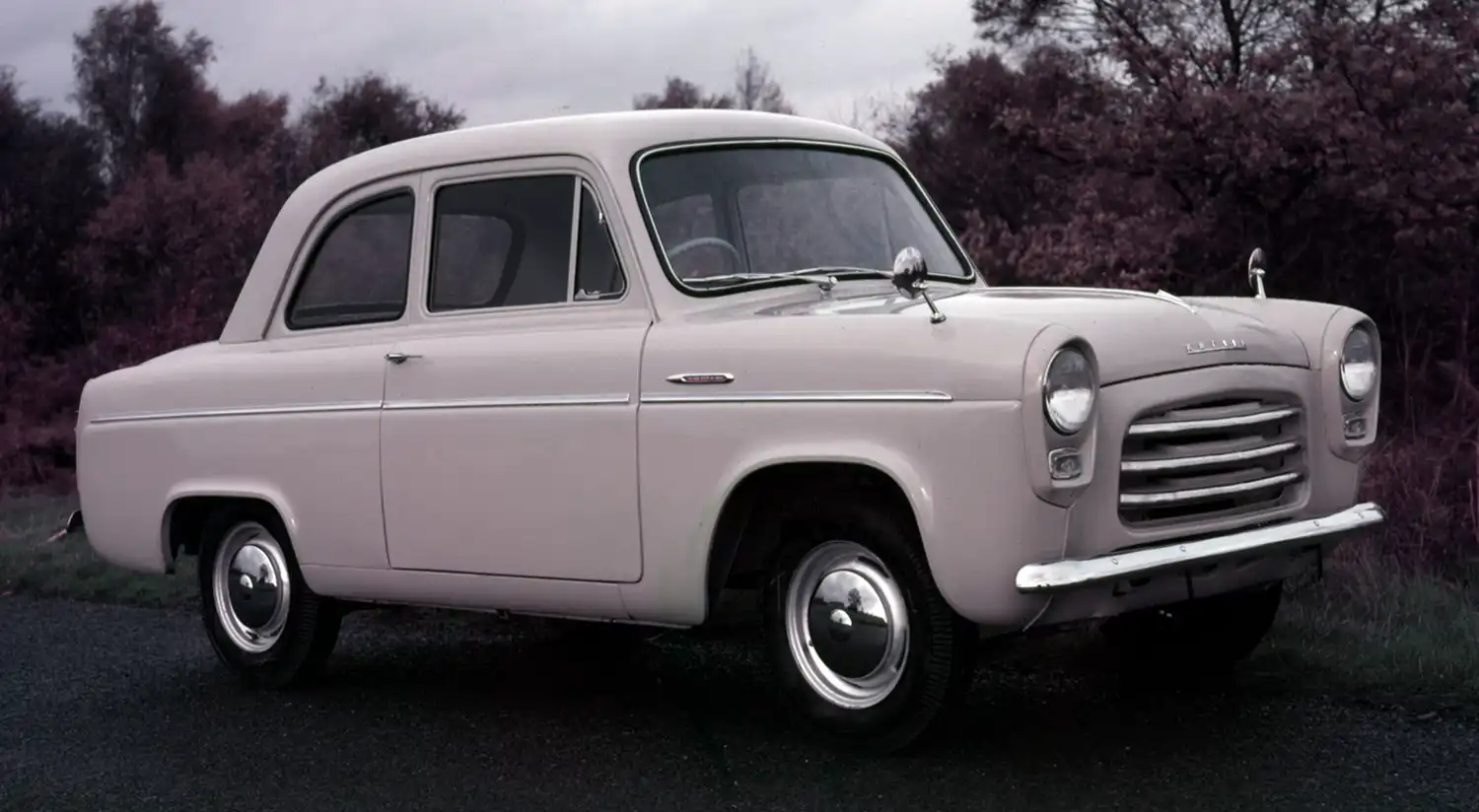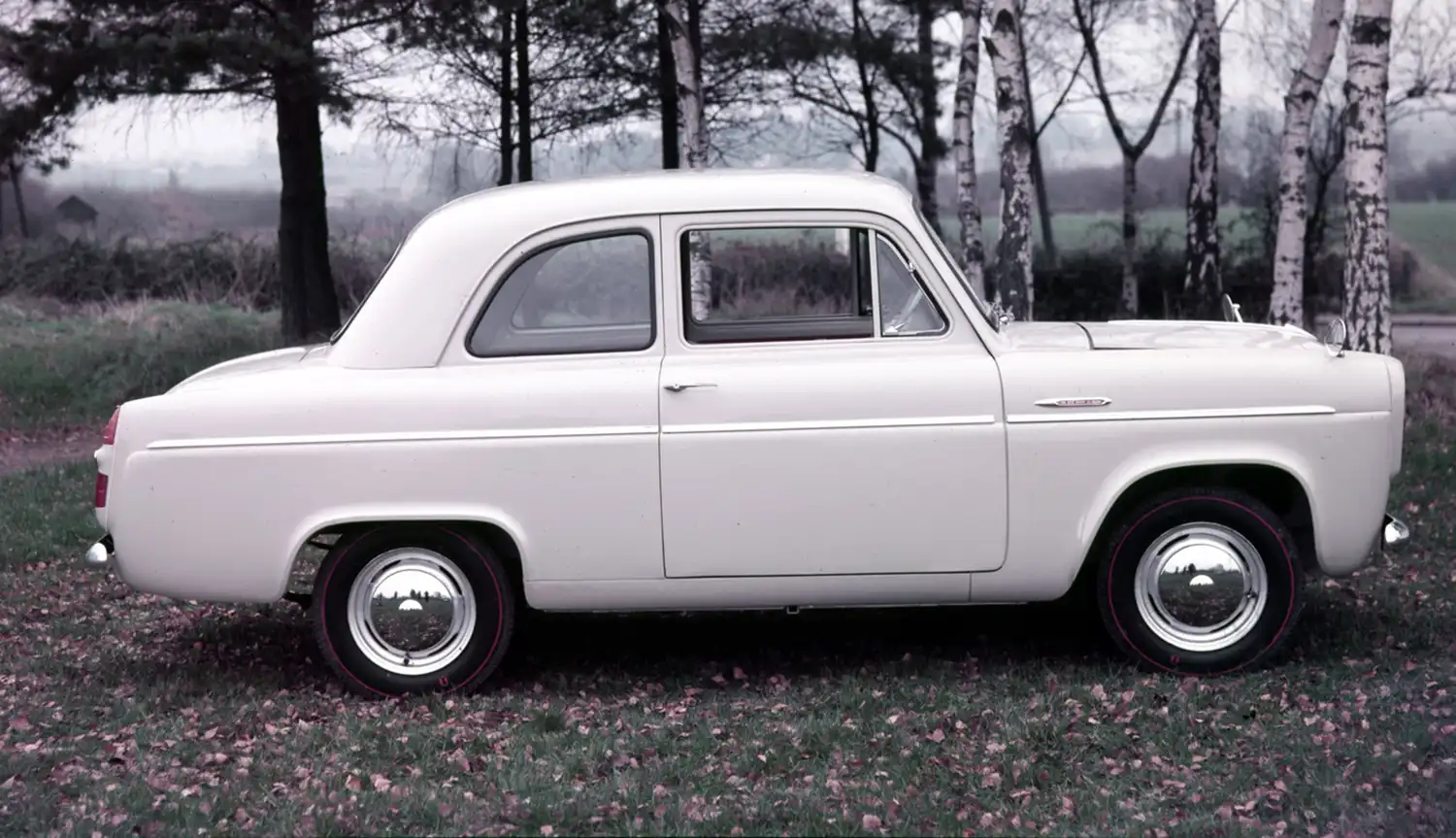
When you think of a truly iconic British car, often images of sports cars or luxury saloons come to mind. Yet, the 1955 Ford Anglia 100E holds a special place in the hearts of many, and for good reason. It was more than just a car; it was a stepping stone, a symbol of post-war recovery, and a vehicle that brought modern motoring to the masses. This little car holds a surprising amount of history.
A Leap into Modernity
The 100E, launched in 1953, marked a significant departure from its upright, pre-war predecessors. Ford of Britain truly embraced a new design philosophy with this model. Gone were the separate chassis and exposed fenders. In their place, a sleek, modern three-box body emerged. This unitary construction was a significant innovation for small cars at the time. It offered improved rigidity and a cleaner aesthetic. The design was contemporary, echoing the look of larger Ford models.
Engineering for the Everyman
While its exterior screamed “modern,” the heart of the 1955 Ford Anglia 100E still beat with a familiar rhythm. Under the bonnet resided an 1172cc side-valve engine, a carryover from earlier models. Despite its older design, this engine was robust and reliable. It produced a modest 36 horsepower, enough to propel the Anglia to a top speed of around 70 mph. Power was sent through a three-speed manual gearbox. This combination made the Anglia an accessible and economical choice for families.
Innovative Features for Its Time
The 100E introduced several features that were quite advanced for a car in its class during the mid-1950s. Notably, it was one of the first British Fords to feature independent front suspension. This utilized MacPherson struts. This innovative setup drastically improved ride comfort and handling. It made the Anglia a more pleasant car to drive on varied roads. Moreover, hydraulic brakes replaced older mechanical systems. This provided more confident stopping power.
Design Details and Variants
The 1955 Ford Anglia 100E came primarily as a two-door saloon. It showcased clean lines and a simple yet elegant grille with three horizontal chrome bars. For those needing more space, Ford also offered estate versions, known as the Escort and the more upmarket Squire. These shared the same mechanical underpinnings but provided practical cargo solutions. Inside, the 100E featured PVC-trimmed seats and an instrument cluster around the steering column. These details highlighted its practicality and forward-thinking design.
The Anglia’s Cultural Footprint
The Anglia 100E quickly became a common sight on British roads. Its affordability and reliability made it a popular choice for families and businesses alike. It represented a new era of personal mobility. This car became ingrained in the fabric of post-war British society. While later Anglia models might be more famous (think “Harry Potter”), the 100E laid the groundwork. It showed that Ford could produce a stylish, modern small car.
A Legacy of Simplicity and Charm
The production run of the 100E lasted until 1959. Over 345,000 units rolled off the assembly lines. This success cemented its place in automotive history. Today, the 1955 Ford Anglia 100E is cherished by enthusiasts. It is appreciated for its simple mechanics and charming character. Many find it an ideal entry point into classic car ownership. Its straightforward design makes it relatively easy to maintain.
The 1955 Ford Anglia 100E might not have been a supercar. However, its significance cannot be overstated. It was a modern, accessible, and beloved vehicle. It shaped the landscape of British motoring for a generation. This small car truly left a big impact. It remains a testament to practical, thoughtful engineering.
Disclaimer: Information provided is based on historical records and widely accepted automotive facts for the 1955 Ford Anglia 100E.
Source: Ford Heritage Vault
